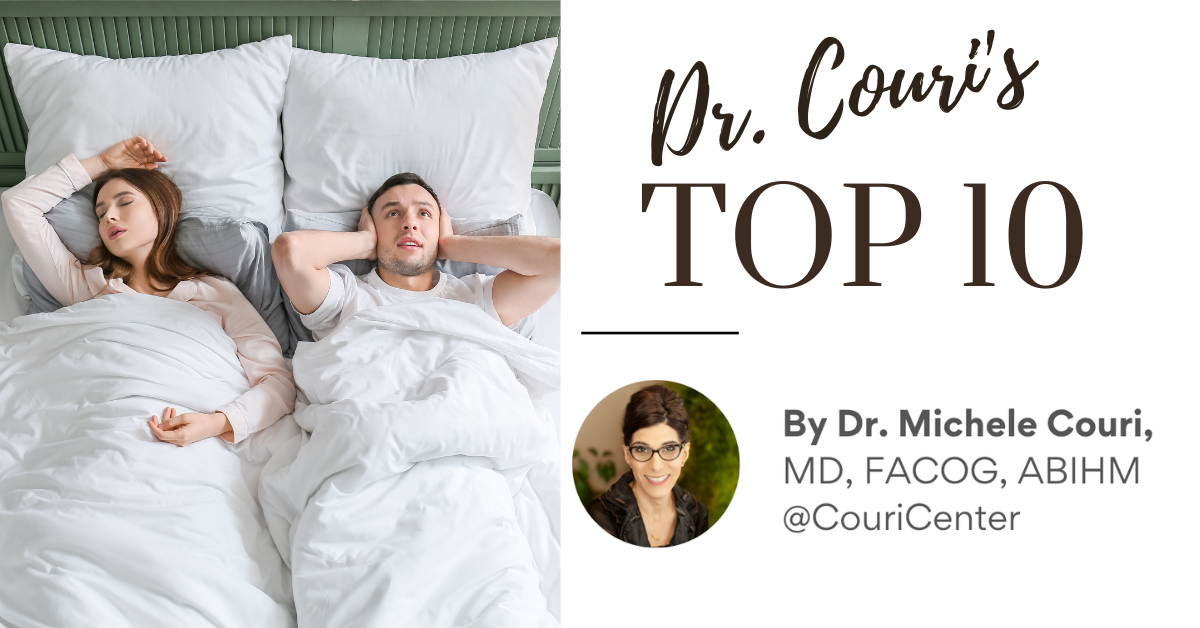
Are You or a Loved One Suffering from Sleep Apnea? 10 Surprising Facts You Need to Know.
By Dr. Michele Couri, MD, FACOG, ABIHM
Sleep apnea is a sleep disorder affecting millions of people worldwide. Here are ten crucial facts about it:
- Worldwide, 17% of women and 34% of adult men have been diagnosed with obstructive sleep apnea (OSA), which is diagnosed as multiple, repetitive episodes of upper airway collapse during sleep.
- Females are often underdiagnosed and under-treated for sleep apnea compared to men despite similar symptoms. In fact, up to 90% of women with severe OSA go undiagnosed, or if diagnosed, they are undertreated.
- The prevalence of OSA increases with age, especially for women after menopause. Menopause has been shown to increase both the risk and severity of OSA.
- The symptoms of OSA are different between men and women, with women having more vague symptoms of OSA, such as fatigue and depression.
- Screening questionnaires are not as effective at identifying the risk of OSA in women compared to men.
- Common symptoms associated with obstructive sleep apnea include chronic fatigue, non-restorative/non-refreshing sleep, snoring, choking arousals, and diminished cognitive function (brain fog).
- Obstructive sleep apnea can be a cause of high blood pressure (HTN) and is associated with an increased risk of cardiovascular diseases such as heart failure, atrial fibrillation, coronary heart disease as well as stroke. OSA is also associated with an increased risk of metabolic abnormalities such as insulin resistance and pre-diabetes.
- While obesity is a significant risk factor for obstructive sleep apnea, roughly 20-40% of patients with OSA are not obese.
- Treating OSA with CPAP (continuous positive airway pressure) has been shown in numerous studies to improve high blood pressure as well as reduce the cardiovascular risks associated with the disease.
- Exercise and weight loss, when applicable, have also been shown to positively affect OSA.
One of the most common concerns that I hear women report is fatigue, especially in perimenopause and menopause. While there can be many causes of chronic fatigue, the possibility of sleep apnea is always on my radar screen. In the Peoria area, we are fortunate to have sleep disorder specialists available to evaluate and treat patients who we suspect may be suffering from a sleep-related disorder such as sleep apnea. If you or a loved one are concerned that you may have sleep apnea, talk to your provider about a referral to get tested.
To Your Health,
Dr. Couri
Sources Used:
Lindberg E, et. al. Women with Symptoms of Sleep-Disordered Breathing are Less Likely to be Diagnosed and Treated for Sleep Apnea Than Men. Sleep Med. 2017 July;35:17-22.
Kumar, S. et al. Sex Differences in Obstructive Sleep Apnea. Clinics in Chest Medicine. Volume 42, Issue 3. September 2021, Pages 417-425
Javaheri, S. Sleep Apnea: Types, Mechanisms, and Clinical Cardiovascular Consequences. Journal of the American College of Cardiology. 2017 Feb 21;69(7):841-858.
Mohammadieh, A. Sleep Disordered Breathing: A Management Update. Intern Med. J. 2017 Nov;47(11):1241-1247.
